2 min read
Record Precipitation in 4Q2015 has Little Effect on US South Stumpage Prices
 Daniel Stuber
:
January 14, 2016
Daniel Stuber
:
January 14, 2016
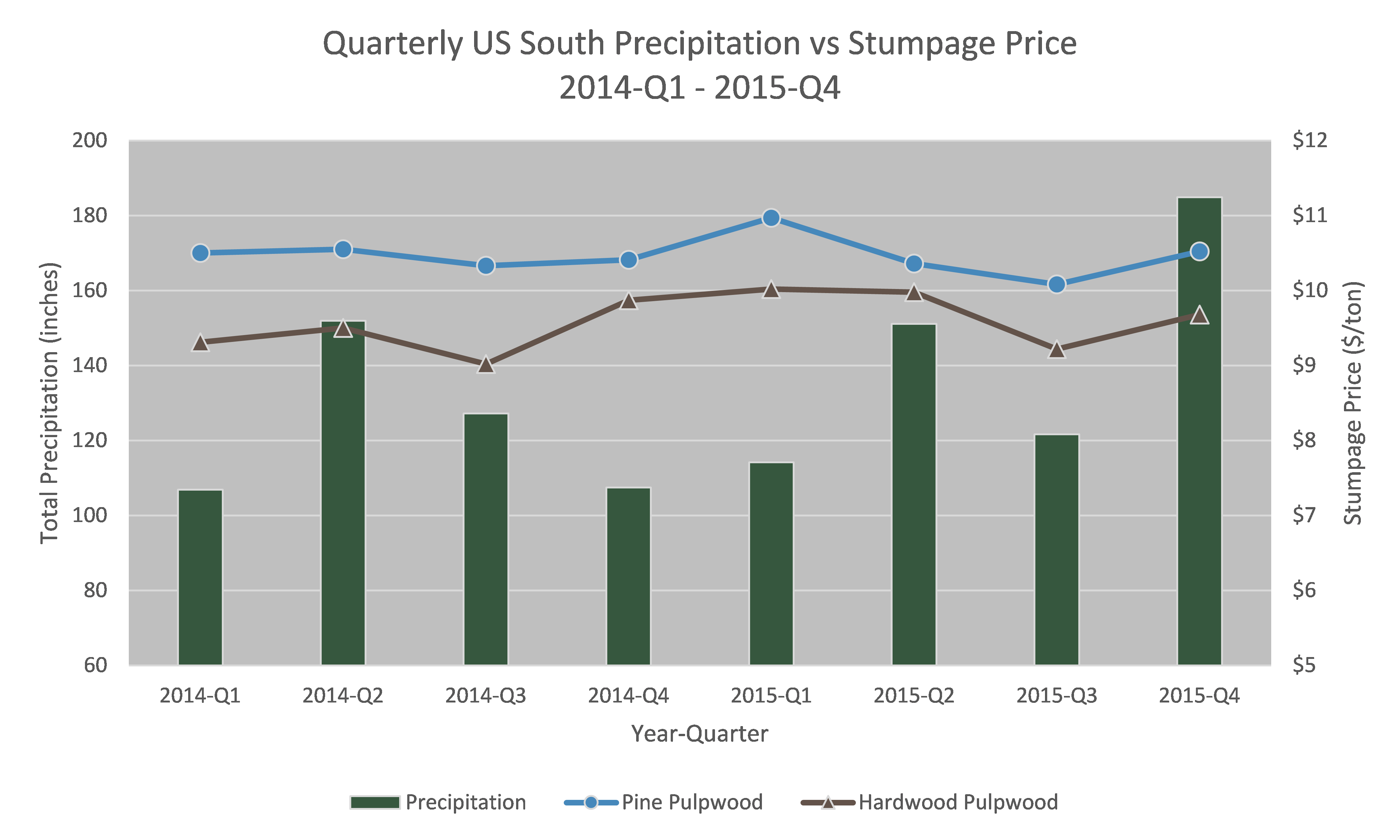
The total amount of precipitation the US South received in the fourth quarter of 2015 was a record high, making it one of the wettest periods of the last 15 years. While certain geographic areas are still recovering from the deluge and the accompanying flood damage, the unusually wet season did not dampen regional stumpage prices and timber markets.
According to the National Oceanic and Atmospheric Administration (NOAA), a total of 185 inches of precipitation fell across the US South in 4Q2015 compared to an average of 109 inches that fell in the fourth quarters from the previous 14 years. This represents a 70 percent increase. It also marks a 3 percent increase over the old 15-year record of 180 inches in 4Q2009.
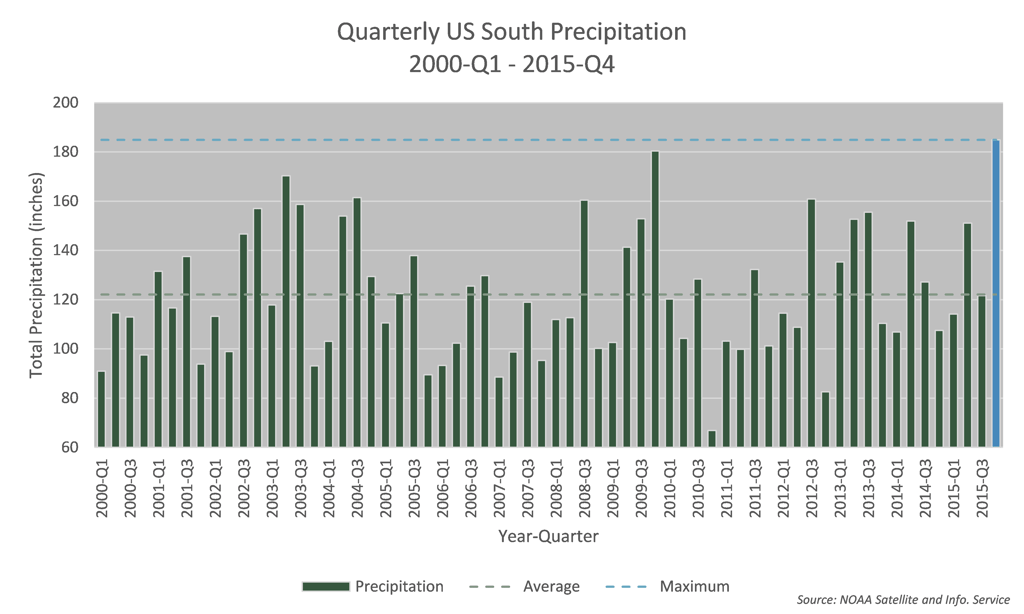
As a result of this fourth quarter anomaly, the annual US South total for 2015 increased to 572 inches of precipitation, which is five inches shy of 2009’s record (577 inches). The 2015 yearly total also marked a 17% increase above the 15-year average, and a 16 percent increase over 2014.
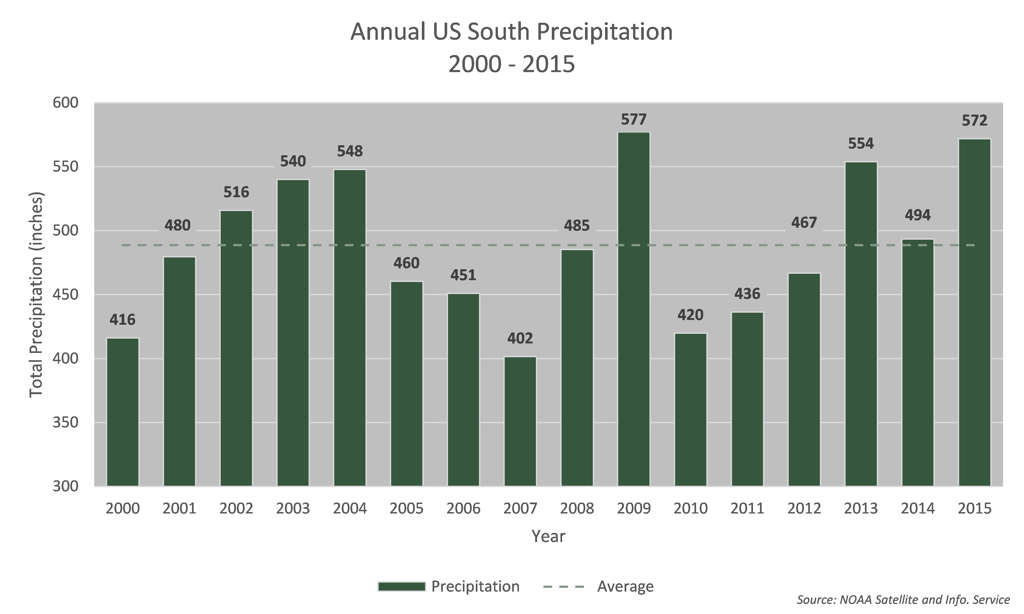
With the rapid increase in precipitation in such a short timeframe, one would have expected stumpage prices to skyrocket as buyers scrambled to find available supply. Closed highways and county roads, and a general state of emergency brought much of pine-dense South Carolina to a standstill in the wake of the worst part of the flooding. Inaccessible and saturated timber stands—which were forced to remain dormant for weeks on end—drastically limited supply.
While prices have increased marginally and some emergency spot purchases have been observed, overall averages remain lower than averages observed earlier in 1Q2015 and for some products, increases are lower than 2014’s seasonal increase. One would expect that record precipitation totals and the end of the calendar year would have converged to create a substantial bump in regional stumpage prices, but they did not. So, what exactly is going on within this market?
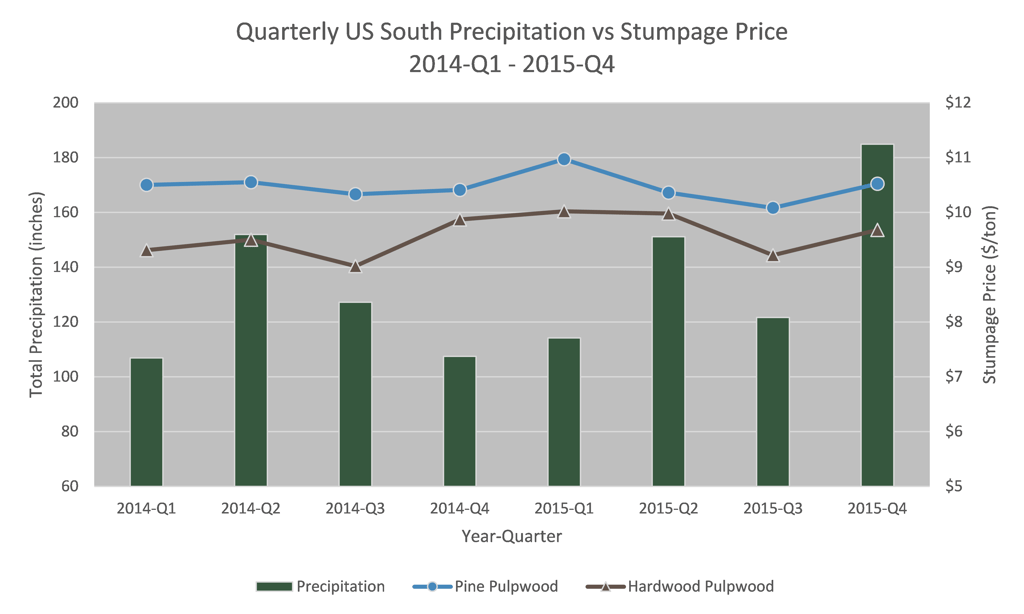
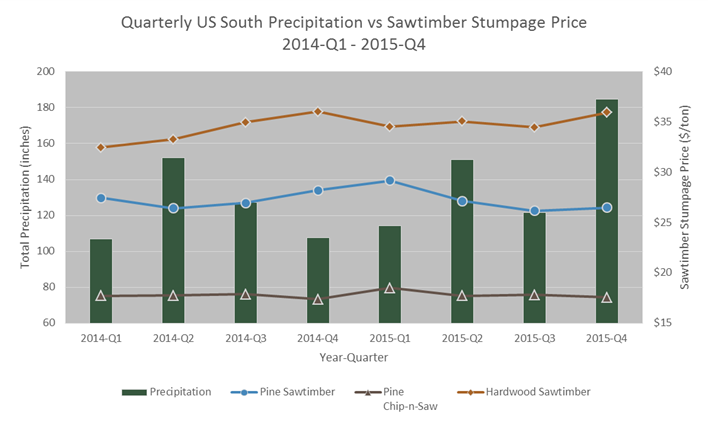
Our Take:
While our 4Q2015 delivered data is still being collected, evidence suggests that many mills established deep inventories during 3Q2015 and that demand softened during 4Q. As a result, it is likely that mills held delivered prices in check (as much as possible), thereby forcing the price pressure down the supply chain. The restricted supply is likely to have had more of an immediate effect on wood suppliers’ freight cost and margins, as they were forced to increase haul distances to secure supply.
As the remaining data arrives and is finalized, we will discover the answers. But if these current wet weather conditions persist, we will see that effect become much more pronounced on the stump in 1Q2016. Expect stumpage prices to increase sharply as mill inventories dwindle and delivered prices are forced upward, giving suppliers greater flexibility for better stumpage price offerings.






